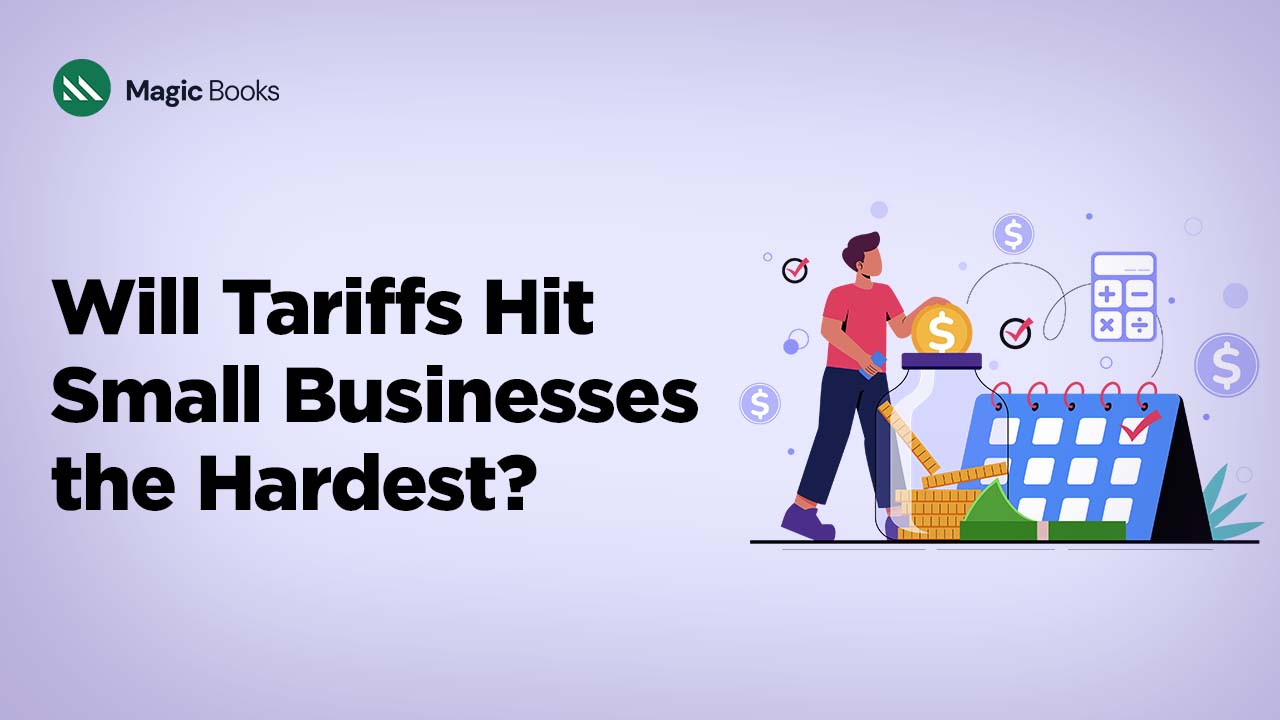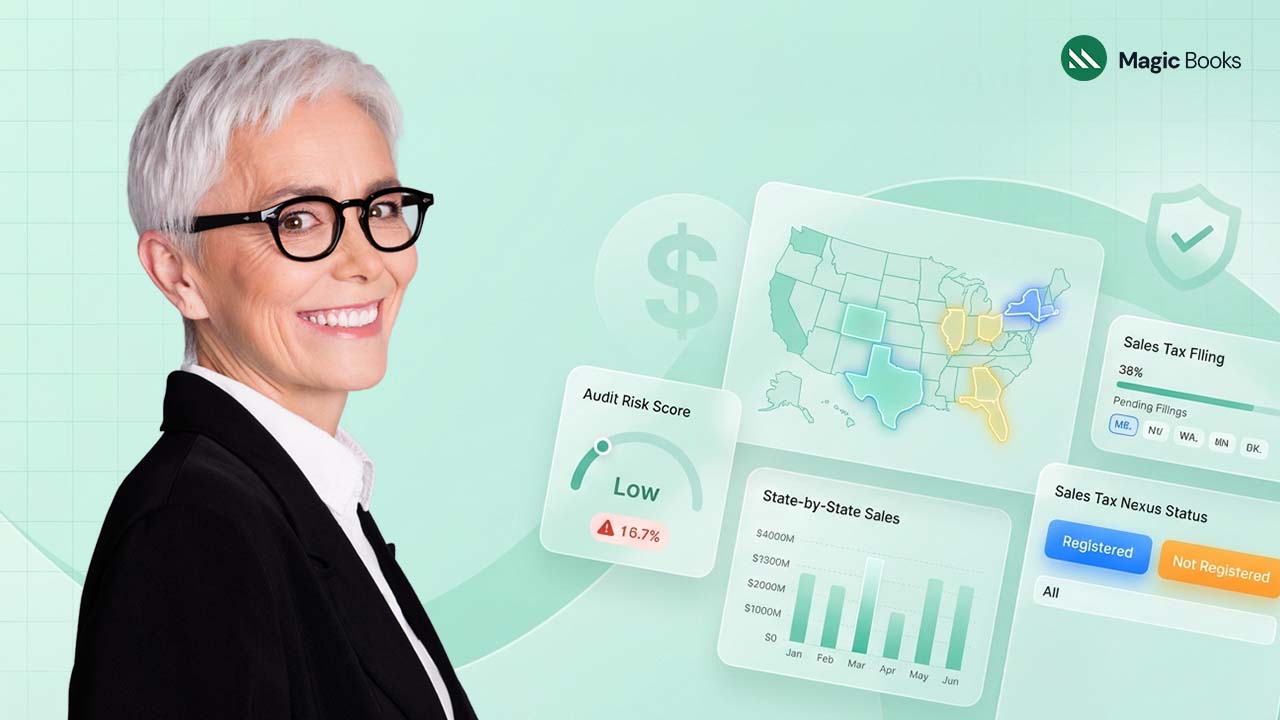Certain businesses, especially small ones, suffer from higher immediately imposed costs caused by the April 2025 “reciprocal tariffs” again invoked by President Donald Trump. By their very nature, small businesses don’t have the scale, financial cushion and stables of compliance officers to absorb or pass on these higher costs, as their larger counterparts do.
Large companies can shift their supply chains; usually negotiate sizable discounts based on volume and often have teams of in-house compliance experts. Small businesses usually operate on single-digit profit margins and fewer suppliers. It is quite different for small businesses to effectively have their necessary level of cost of imports raised and then take a hit to working capital costs.
They have to adjust their business menus, their supplier lists, and their fulfillment options knowing that what the consumer is getting may not be from the FS market & has no value anymore!? Now, consider the wider-than-sudden and last-minute widen implications of de minimis exemption elimination as of May 2, meaning that there are random tariffs of several hundred dollars on packages valued under $800 coming from China – last time it happened, WS took & fixed it with specific FBA sellers & niche retailers, raising levels of compliance costs put on small importers.
Evidence shows that small businesses only keep up to 50 percent of tariff-induced costs, but large firms may pass through 70-80 percent onto their consumers making it even tighter on already tight margins. An analysis of administrative overhead; the price-elasticity of demand to sales; and three true case studies, the evidence shows different tactical approaches on how to potentially mitigate supplier harm, by engineering tariffs, constrained lean inventory practices etc. In summary, a detailed overview of the environmental situation off no exchange or reducing compliance in small-business tariffs shipping challenges of 2025.
How did it start:
On April 2, 2025, the White House used the International Economic Emergency Powers Act (IEEPA) to put in place reciprocal tariffs aimed at resolving the U.S. trade deficit and lack of reciprocity in trade arrangements around the world.
As of April 5, there was a baseline tariff of 10 percent on all imports, and tariffs on goods from 57 specific trading partners based on range (anywhere from 11 percent to 50 percent) that started on April 9. The 54 percent tariff on small packages that were exempt from customs duty under an exception for small packages known as Section 321 in U.S. Customs law took away the duty free treatment for packages valued at under $800 from China and Hong Kong as of May 2, 2025.
These 2025 Trump tariffs elevate average U.S. import duties from 2.5 percent to about 18.8 percent in U.S. International Trade Commission data–the sharpest increase in tariffs levels in more than three decades.
The tariffs come in a record environment for imports of $346.8 billion for March 2025–to put that in context, the trade deficit level of $140.5 billion was pushed up partly by businesses trying to clear inventories before the tariffs went into effect.
For C-suites as well as small-business owners, it is important to differentiate how small business tariffs and corporate-level exposure generate resilient and adaptive supply-chain strategies and maintain competition.
Small vs. Large Business Cost Exposure:
Big corporations such as Apple and Home Depot do not experience cost shocks because they engage in diversified global sourcing, multi-year supplier contracts, and in-house logistical teams. This allows for blended duty rates and buying in phases.
Small businesses usually do not have adequate options regarding international suppliers and do not have the bargaining power to secure lower prices or delayed duty payments.
With recently increasing tariffs, small businesses immediately saw input costs increase 25–54% on the impacted items, overnight eroding 5–10% of the net profit margins of product-based SMEs.
| Date | Tariff Rate | Coverage |
| April 5, 2025 | 10 percent | Baseline on all imports |
| April 9, 2025 | 11–50 percent | Goods from 57 specific countries |
| May 2, 2025 | 54 percent | Small parcels (Section 321) |
| Metric | Pre‑April 2025 | Post‑April 2025 |
| Average Tariff Rate on Imports | 2.5 percent | 18.8 percent |
| Steel Price Increase (Feb 2025) | — | 12–15 percent |
Most small businesses take on 30–50 percent of tariffs to prevent the loss of price-sensitive customers. Big businesses take on 70–80 percent of cost increases in the form of small price increases without losing customers. The growing gap in competitiveness is apparent, as small businesses are either watching their margins contract significantly or experiencing cash flow tightening as their costs rise.
Compliance Burden & Administrative Overhead:
The new tariff structure will require extensive tariff classification, customs documentation, and brokerage services, typically done in tandem by sizable businesses’ trade-compliance teams. Small businesses, by contrast, will routinely engage in these services from within their supply chain, and will incur considerable brokerage fees, lawyer’s fees, and delays while awaiting clearance to re-export.
- Customs Brokerage Fees: $25–$1,500 per shipment, depending on complexity.
- Annual CBP Broker Permit: $180.57 registration fee.
- Legal & Consulting Fees: $3,000–$8,000 annually for tariff-classification opinions and customs-compliance consulting.
A February 2025 National Federation of Independent Businesses (NFIB) survey found that 6 percent of small business owners identified federal regulations and red tape as their number one issue, indicating an increase in compliance concerns, including tariffs.
The SBA’s (Small Business Administration) Office of Advocacy launched the Red Tape Hotline on April 30, allowing small & medium enterprises (SMEs) to submit regulatory pain points; in its first week the Hotline received 96 submissions, demonstrating the high degree of frustration with management of compliance duties with frequent changes in trade rules.
These post-import administrative burdens shift critical resources away from the core business, reduce capital investment in growth opportunities, and increase the likelihood of breaches for small businesses.
Price Elasticity & Market Power:
Economic theories show that a 1 percent increase in prices for imports will generally reduce demand by about 0.76-1.0 percent in the short term, or an elasticity of about -0.76. Big firms are able to leverage brand equity and greater product variety to maintain sales volume when their prices rise, incorporating 70-80 percent of tariffs into costs pass-through to end consumers. Many small firms, especially niche retailers with specialty products or services, tend to absorb 30-50 percent of additional costs in order to keep the customer, accepting a reduction in margins, while delaying reinvestment decisions.
In April 2025, growth in U.S. nonfarm payrolls gradually declined to 130,000 jobs, attributed in-part to the uncertainty associated with tariffs and the job freezes of small businesses. This shows how tariffs impact more than costs, and can have further effects on real economic indicators, such as employment levels and consumer spending behavior.
Haand (Manufacturing):
Haand, a Portland‑based tableware firm importing European porcelain, experienced input costs jump 25 percent overnight from tariffs on ceramics. Lacking a substitute supplier of equal quality and design, Haand passed on half the cost increase and raised product prices by 12 percent, which led to a 20 percent reduction in order volume within 30 days. The firm is now considering partial reshoring at 30 percent higher labor costs and negotiating longer payment terms with European partners.
Joe and Bella (Retail):
Joe & Bella, an adaptive clothing retail store, uses Chinese-sourced parts in its apparel product line. The May 2 de minimis exemption elimination charged a 54 percent tariff on small-parcel imports, doubling unit duty and logistics costs. Joe & Bella retained retail prices by absorbing half the cost increase, reducing marketing costs by 15 percent and postponing two scheduled store openings, which combined lowered revenue expectations by $1.2 million for 2025 Q2.
Abby’s Garden Parties (Services):
Abby’s Garden Parties, an upscale event planning and décor rental company, procures specialty linens and ornaments from Europe and Asia. The new tariff schedule imposed variable tariffs on décor imports, increasing costs by $8–$12 per item and making client billing structures more complex. Administrative hours devoted to customs forms increased 200 percent, and net revenue fell 12 percent in Q2 2025 as price-conscious clients reduced event budgets.
Mitigation Strategies
Small businesses may employ a mix of operational, fiscal, and policy strategies in response to the effects of small business tariffs:
1. Substitute Suppliers and Sourcing
Diversify Geographically: Source from tariff‑exempt or lower‑rate countries such as Vietnam, India, or Mexico to reduce average duty rates.
Nearshoring: Turn to Mexican or Canadian manufacturing to take advantage of USMCA preferences and reduce transportation costs.
Foreign Trade Zones (FTZs) are employed to defer or reduce the duty on holdback inventory intended to be exported.
2. Tariff Engineering & Classification
HTS Reclassification: Utilize brokers of customs to identify product modifications that are entitled to lowered Harmonized Tariff Schedule subheadings.
Duty Drawback Programs: Recover up to 99 percent of duties paid on re-exported merchandise under U.S. Customs duty drawback programs.
3. Lean Inventory and Demand Timing
Just-in-Time Ordering: Timing purchases to occur before tariff escalations are announced, using current inventory to meet short-term demand.
Safety‑Stock Buffers: Maintain bare minimum excess stock to cushion short‑term supply chain disruptions at low carrying cost.
4. Financial Hedging & Cash‑Flow Management:
Commodity swaps are used to fix raw material prices through commodity swap contracts, hence hedging input costs over stated periods.
Extended Payment Terms: Negotiate net 60 or net 90 payment terms with suppliers, enhancing working‑capital flexibility.
HSBC TradePay: Customers can utilize financing facilities, such as TradePay for Import Duties, which settles tariff liabilities on their behalf, thereby enhancing visibility on cash flows.
5. Government Resources and Advocacy
Tariff Relief & Exemptions: Obtain exclusions via USTR’s small-business petition processes; monitor Federal Register notices for exclusion availability.
SBA Red Tape Hotline: Document regulatory and compliance obstacles to the SBA Office of Advocacy through the Red Tape Hotline at 1‑800‑827‑5722. Trade associations: Meet with NFIB, U.S. Chamber of Commerce, and the state trade associations to push small-business carve-outs and relief measures.
6. Market Positioning and Pricing Tiered Pricing Models:
Offer a number of product tiers to segment customers by willingness to pay, taking margin erosion on core products.
Value‑Based Messaging: Emphasize quality, sustainability, or service excellence to justify price changes and reinforce customer loyalty.
The small business tariffs released in April 2025 create a multifaceted challenge for U.S. entrepreneurs. Tariffs add cost pressures and administrative costs. These costs have a greater impact on small firms. Larger firms have more options to absorb, defer, and/or pass on costs, allowing the competitive gap to widen. Small businesses can take action to mitigate this complexity. Small businesses can maintain margins and adapt to the changes in a complex trade environment by proactively diversifying suppliers, using tariff engineering tactics, managing and developing inventories appropriately, and utilizing both financial and government support. The importance of continuous engagement with policymakers, trade associations, and financial partners will be important in grabbing targeted relief. It is imperative for the nearly 30 million small businesses in the U.S. to continue as viable economic contributors within the economy.



